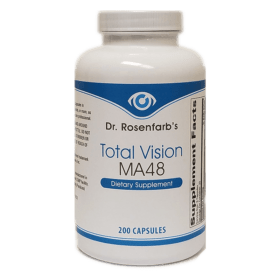Lattice Degeneration
Lattice degeneration gets its name from the crisscrossing, fine, white lines on the surface of the retina, which an eye doctor can see during the examination. It occurs in 7–8% of the general population, most often in patients with myopia (nearsightedness) and over the age of 20. It also appears that neither race nor sex is a risk factor. Approximately 45% of those affected have lattice degeneration in both eyes. Patients with lattice degeneration are typically symptom-free.
Lattice degeneration occurs when the outside edge of the retina (away from the central macula), responsible for peripheral vision, shrinks, thins, develops holes or otherwise atrophies. Clinical features may include retinal thinning, branching, whitish lines on the retinal surface and even small holes in the retina. In addition, lesions can form. Sometimes lesions cause holes or breaks in the retina, which are atrophic in nature. Atrophic means that they are due to the wasting away or diminishing of portions of the retina. Unlike retinal detachment, these breaks and holes are not associated with pulling between the vitreous and retina. They are usually an incidental finding of a dilated ophthalmologic examination that may occur within the lattice (present in 25–35%) and result from progressive retinal thinning. The fine lines seen in lattice degeneration are present in roughly only 10% of all lesions. The other 90% are known as uncomplicated lattice degeneration, with lesions but no tears, holes, or breaks.
Reccomended Supplements:
- You cannot add "Total Vision MA48" to the cart because the product is out of stock.
-
Sale!

LipoVision Drops
Original price was: $40.00.$25.00Current price is: $25.00. Add to cart -

Total Vision MA48
$55.00 Read more -
Sale!

Hydro Vision – H2 Vision – Molecular Hydrogen Tablets
Original price was: $60.00.$49.00Current price is: $49.00. Add to cart -

CannaVision Oil 2500mg
$99.00 Add to cart -

LipoVision-DHA
$30.00 Add to cart -

Neuro Vision
$58.00 Add to cart -

CannaVision Oil 5000MG
$149.00 Add to cart -

Pro Greens
$45.00 Add to cart
How To Heal Your Eyes At Home
Our New groundbreaking at home treatment program
Rest Easy.
Your Vision Is Our Mission
Apply Now For A Consultation to Discover if In Office Treatments are Right for You.

